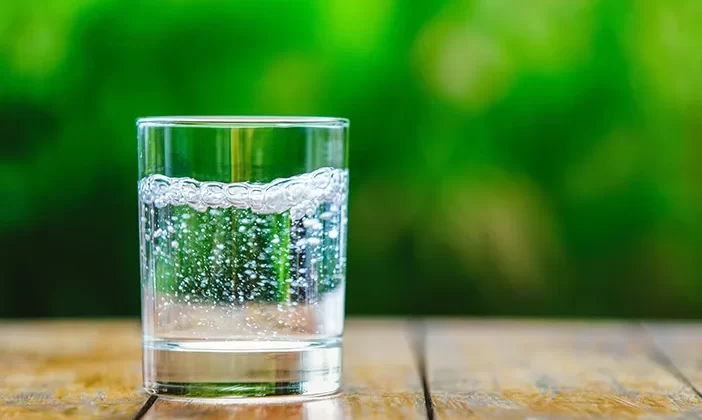
The Earth naturally provides its inhabitants with vital resources that help sustain life and well-being. According to NASA, the fundamental resources required for survival are air, water, food, and shelter. Interestingly, all of these are provided by the Earth.
Nearly 71% of the Earth’s surface is made of water bodies, and the same may be said of the human body. A man may live without food for even 21 days, but he begins to lose his vitality within a few days without water.
Throughout history, mankind has used different methods to filter the Earth’s natural water for personal use. Today, the scenario is dire in the sense that water has become a bane. How can a life-giving force turn into a nemesis? In this article, we will discuss how water is endangering life in today’s world.
Why is Clean Water Non-Negotiable?
It would not be incorrect to say that water is synonymous with life. Depending on an individual’s metabolism and health, they can go only a few days without water. Soon after, dehydration begins to set in, and though the person may continue to breathe, their existence becomes vegetative.
While animals can drink water directly from different sources (lakes, ponds, even oceans), man cannot. The water must first be purified to become suitable for consumption. The sad part is that even today, at least two billion people do not have access to safe drinking water. That means only 74% of the world’s population has access to clean water.
When we say that water has benefits like nourishment for the body, prevention of diseases, chemical regulation, better digestion, etc., we are talking about clean water. If there are impurities like microorganisms, organic and inorganic compounds, colloidal particles, sediments, or dissolved salts in the water, it becomes unfit for consumption.
A Problem That Goes Deeper Than Scarcity
As per the United Nations Children’s Fund (UNICEF), 50% of the world’s population could be living in areas with water shortages by 2025. By 2030, around 700 million people may be displaced due to a dearth of water.
This does not simply mean that such regions would be so struck by climate change that water will suddenly disappear. The primary issue is that of contamination, and it’s worse today than 100 years ago. The pollutants found in modern municipal water are a step ahead of the soil particles and pathogens of bygone eras.
Let’s take the example of the worst-ever water contamination crisis in US history – Camp Lejeune. Established in the 1940s, this Base served as a major warfighting facility for the US Marine Corps.
Unbeknownst, the Camp’s waters were contaminated with Volatile Organic Compounds (VOCs) like perchloroethylene and trichloroethylene. These are organic chemicals that easily evaporate from their liquid or solid forms.
Being odorless and tasteless, no one at the Camp could tell the difference in their water. Three water supply tanks had been affected – Hadnot Point, Holcomb Boulevard, and Tarawa Terrace. The Camp’s residents consumed the contaminated water for nearly three decades (1953 – 1987).
According to TorHoerman Law, cases of life-threatening conditions like cancer, infertility, Parkinson’s disease, etc., started emerging in the years that followed. At the time, the Obama administration allowed victims to avail of free medical care. In August 2022, President Joe Biden made it possible to seek legal justice.
What started with a few hundred administrative claims has grown into 170,000 claims and over 1,500 lawsuits. To accelerate the claims resolution process, the government introduced the Elective Option last year. This means the Camp Lejeune lawsuit payout per person is known in some cases.
Bench trials are expected to be held within this year to settle the remaining cases. The payouts, in some cases, could easily reach hundreds of thousands of dollars. This incident has had such far-reaching consequences that it further reiterates the importance of clean water.
This holds true even in case of external use because certain chemicals found in water are toxic even when exposure to them is external.
Effective Methods of Water Purification
Gone are the days when simply boiling water was enough to ensure it was safe for consumption. This method is only effective in removing microorganisms like viruses and bacteria. It will not work for impurities like VOCs, dissolved salts, organic chemicals, etc.
For instance – activated carbon filtration is needed to avoid another incident like Camp Lejeune. Moreover, reverse osmosis (RO) technique is needed to rid the water of heavy metals and organic chemicals.
It is best to first understand the type of municipal water supplied to your residence. In case of uncertainty, have the water tested in a state-certified laboratory to check for PFAS, VOCs, and other contaminants.
The Centers for Disease Control and Prevention (CDC) recommends different types of home water treatment methods, including solar disinfection, flocculant disinfection, and chlorination. The most suitable one(s) will depend on the level of contaminants in the supply water.
Let’s conclude by saying that the world will never run out of water just like man may never know how to invent this precious resource. This is because water continuously circulates within the Earth’s closed system. However, much of the available water has become unfit for consumption due to hazardous wastes, urbanization, and industrialization.
It is high time for man to stop exploiting the Earth’s natural resources. If the over-exploitation continues, the world may have plenty of water, but its inhabitants will certainly have none for consumption.

